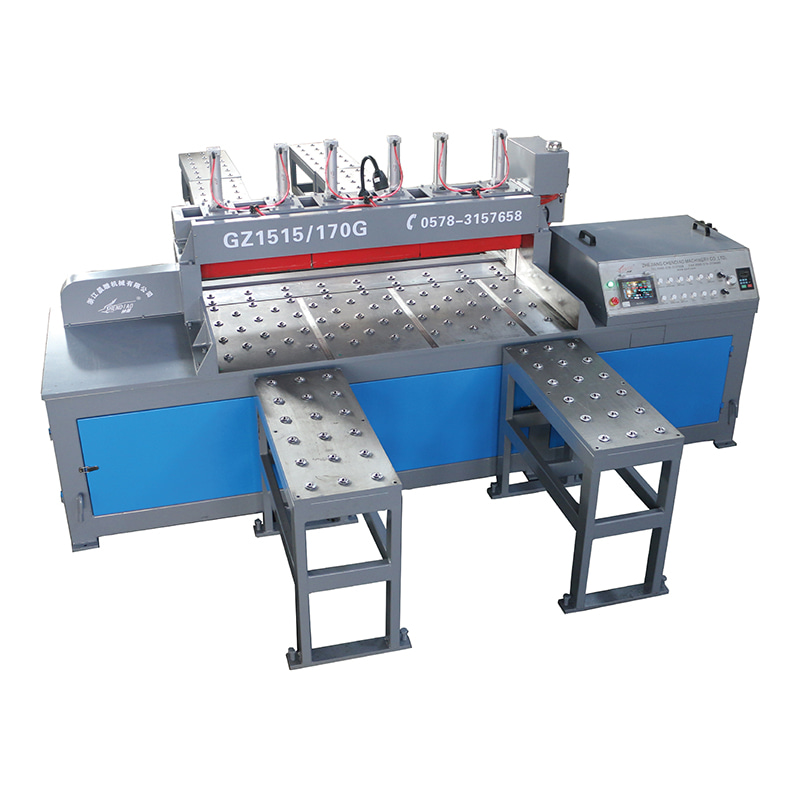NCJ-70 Servo Automatic Feeding High Speed Metal Circular Saw Machine
Cat:Hinged Circular Saw Machine
Servo Automatic Feeding High Speed Metal Circular Saw Machine is an ad...
See DetailsIn the competitive landscape of metal fabrication, the Aluminum Plate Cutting Circular Saw Machine stands out as a pivotal tool, yet its efficiency in reducing material waste during the cutting process is a critical area of focus. The ability to decrease waste not only enhances the profitability of operations but also aligns with sustainable manufacturing practices. This article explores various approaches and techniques to reduce material waste while improving the efficiency of the Aluminum Plate Cutting Circular Saw Machine.

The efficiency of the Aluminum Plate Cutting Circular Saw Machine is inherently linked to its precision and accuracy in cutting. By ensuring that the machine is calibrated and maintained to high standards, manufacturers can reduce the occurrence of error and, consequently, decrease material waste. Regular servicing and the use of sharp, high-quality blades are essential to achieving clean cuts and reducing the need for rework or scrap.
One of the key factors in reducing material waste with the Aluminum Plate Cutting Circular Saw Machine is the optimization of cutting patterns. By carefully planning and nesting the cuts, more material can be extracted from each plate, thus reducing waste. Advanced software solutions can assist in creating efficient cutting layouts, ensuring that the Aluminum Plate Cutting Circular Saw Machine operates at its good efficiency.
Another aspect to consider is the selection of the appropriate blade for the specific aluminum alloy being cut. Different alloys have varying hardness levels, and using the wrong blade can cause excessive wear, increased cutting time, and higher waste. The right blade can improve the Aluminum Plate Cutting Circular Saw Machine's efficiency, causing cleaner cuts and less material loss.
The use of cutting oil or lubricants can also play a role in reducing waste. Proper lubrication can reduce friction, which in turn can cause less heat build-up and less stress on the blade. This can prolong the blade's life and improve the quality of the cuts, reducing the need for secondary finishing processes that can generate waste.
In addition to the mechanical aspects, operator training is crucial. Well-trained operators understand the nuances of the Aluminum Plate Cutting Circular Saw Machine and can make adjustments on the fly to optimize the cutting process. This knowledge can cause fewer mistakes and a reduction in material waste.
Moreover, integrating a quality control system can help identify issues early in the cutting process. By monitoring the performance of the Aluminum Plate Cutting Circular Saw Machine and the quality of the cuts, manufacturers can quickly address any problems before they result in significant waste.
Finally, embracing Industry 4.0 technologies, such as data analytics and the Internet of Things (IoT), can provide real-time insights into the performance of the Aluminum Plate Cutting Circular Saw Machine. These technologies can help predict maintenance needs, optimize cutting parameters, and monitor waste levels, all of which contribute to a more efficient and less wasteful operation.
In conclusion, the efficiency of the Aluminum Plate Cutting Circular Saw Machine in reducing material waste is a multifaceted challenge that requires attention to detail in every aspect of the cutting process. By focusing on precision, cutting pattern optimization, blade selection, lubrication, operator training, quality control, and advanced technology integration, manufacturers can significantly reduce waste while maintaining the high efficiency that the Aluminum Plate Cutting Circular Saw Machine is known for.